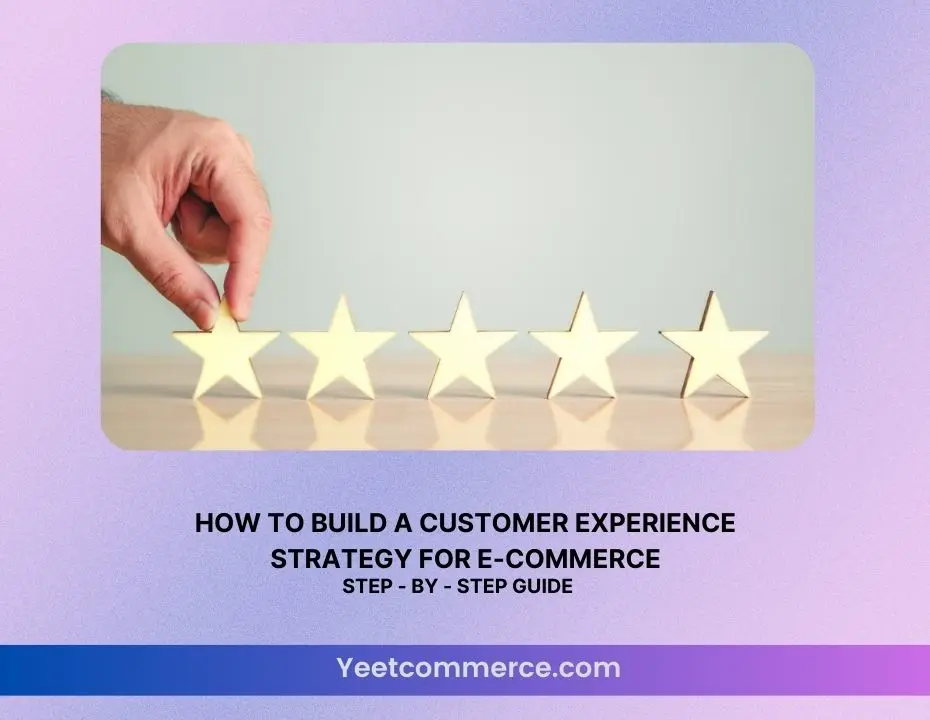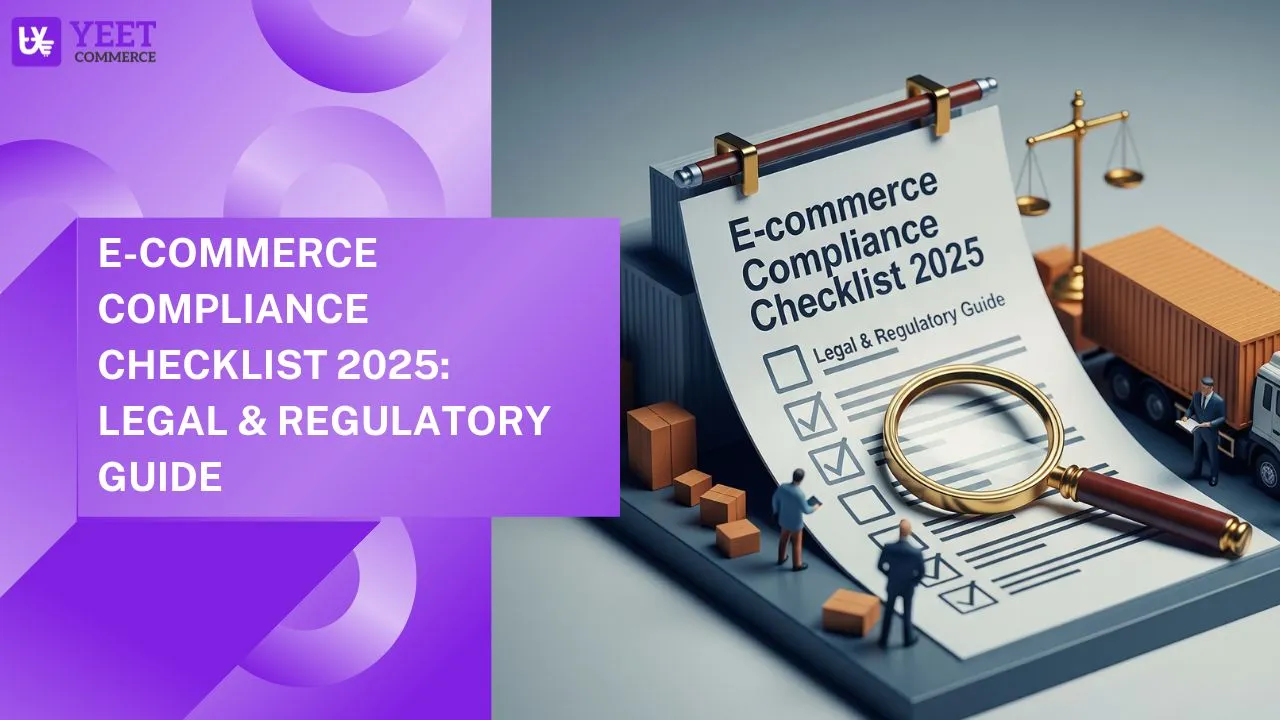Creating an exceptional Customer Experience Strategy is no longer a luxury—it’s a necessity. With online competition growing daily, you need to make sure your eCommerce store stands out. A seamless, enjoyable shopping experience keeps customers returning and turns them into loyal advocates for your brand. But how do you build a strategy that works? Let’s break it down step by step.
1. Understand Your Customers Like a Pro
If you don’t know what your customers want, how can you deliver it? The foundation of a great Customer Experience Strategy is understanding your audience inside out. You need to gather data, analyze behaviors, and anticipate their needs before they even realize them. Use tools like Google Analytics, customer surveys, and social media insights to create detailed buyer personas. These personas help you tailor your store’s design, product offerings, and marketing messages to match your ideal shopper’s expectations.
But don’t stop at demographics—dig deeper. What pain points do they face when shopping online? What would make their experience better? You-sentences help build rapport, so let’s put it this way: you need to step into their shoes and see your store from their perspective. If navigating your website feels like solving a Rubik’s Cube, it’s time for a redesign!
2. Optimize Your Website for a Smooth Shopping Experience
Ever clicked on a slow-loading website and immediately left? That’s exactly what your potential customers do if your site isn’t optimized. Speed, navigation, and mobile-friendliness are non-negotiable for a stellar Customer Experience Strategy. Your store should load in under three seconds, and navigation should be so smooth that even a first-time visitor can find their way effortlessly.
Make sure your product pages are clear and compelling. High-quality images, detailed descriptions, and honest customer reviews can boost trust and reduce purchase hesitation. You-sentences come in handy again: you wouldn’t buy a product without knowing what it looks like, so why would your customers? Give them the details they need to make confident buying decisions.
Also, a seamless checkout process is crucial. Long, complicated checkouts cause cart abandonment. Offer guest checkout, multiple payment options, and clear shipping details. If possible, include a progress indicator so customers know how many steps are left before they can complete their purchase.
3. Personalization: The Key to Customer Satisfaction
You walk into your favorite coffee shop, and the barista already knows your order. Feels good, right? That’s what personalization in eCommerce should feel like. A solid Customer Experience Strategy leverages AI and data-driven insights to make shoppers feel valued.
Use recommendation engines to suggest products based on browsing history. Send personalized emails with tailored discounts. Offer loyalty rewards that feel exclusive rather than generic. You-sentences help paint the picture: you want your customers to feel like VIPs, not just another order number.
Live chat support can also elevate the experience. When customers have questions, they don’t want to wait hours for an email reply. Quick, helpful responses build trust and improve satisfaction. If AI-powered chatbots can handle basic inquiries, your human agents can focus on more complex issues.
4. Build Trust with Transparent and Reliable Service
Trust is the backbone of any successful Customer Experience Strategy. If customers don’t feel secure shopping with you, they won’t return. Be transparent about pricing, shipping, and return policies. Hidden fees and unclear policies lead to frustration and lost sales.
Secure payment options, trust badges, and visible contact information reassure customers that your store is legitimate. You wouldn’t hand your credit card to a stranger on the street, so why would your customers do the same online? Offer secure payment methods and ensure your website has SSL encryption.
Encourage customer feedback and showcase authentic reviews. Responding to negative reviews professionally shows that you care about customer concerns. You-sentences reinforce this: you appreciate when a business listens to you, so give your customers the same respect.
5. Post-Purchase Engagement: Keep Customers Coming Back
Your relationship with customers doesn’t end after they hit “Buy Now.” A strong Customer Experience Strategy includes post-purchase engagement to turn first-time buyers into repeat customers. Send follow-up emails thanking them for their purchase, offering useful product tips, or suggesting complementary items.
Loyalty programs, birthday discounts, and exclusive early access to sales make customers feel appreciated. Social media engagement also helps—responding to their comments and messages creates a community around your brand.
Remember, a satisfied customer is your best marketer. You-sentences bring this home: you want customers to rave about your store, so give them reasons to do so!
Why CX Matters More Than Ever in Online Shopping
In the fast-paced world of eCommerce, a great Customer Experience Strategy isn’t optional—it’s the secret ingredient to success. With endless choices at their fingertips, shoppers won’t hesitate to abandon a brand that fails to impress. If you want your online store to thrive, you need to prioritize customer experience (CX) like never before. Let’s explore why CX matters and how it can make or break your eCommerce business.
“The customer’s perception is your reality.” — Kate Zabriskie
1. The Competitive Edge You Can’t Ignore
Competition in the eCommerce space is fiercer than ever. You’re not just up against local businesses—you’re competing with global giants offering lightning-fast shipping and personalized shopping experiences. A strong Customer Experience Strategy gives you a competitive edge, helping you stand out in a crowded marketplace.
Think about it: would you return to an online store with slow loading times, confusing navigation, and unhelpful customer support? Probably not. You-sentences make this clear—you expect a smooth and enjoyable shopping experience, and so do your customers. When your CX is on point, customers choose you over competitors, even if your prices aren’t the lowest. That’s the power of exceptional service.
2. Happy Customers = More Sales and Loyalty
Customer loyalty isn’t just about discounts and reward points—it’s about how customers feel when they interact with your brand. A seamless and enjoyable shopping experience keeps them coming back, turning one-time buyers into lifelong fans.
Let’s put it this way: you wouldn’t return to a store where the staff ignores you or checkout takes forever. The same applies to online shopping. When you provide fast-loading pages, clear product descriptions, and effortless checkouts, you eliminate frustration and increase satisfaction. Happy customers are also more likely to leave positive reviews and recommend your store to others.
Word-of-mouth marketing is priceless. When customers rave about your business, their friends and family are more likely to trust and shop with you. Investing in a great Customer Experience Strategy pays off by boosting retention, reducing churn, and increasing revenue.
3. Poor CX Costs More Than You Think
A bad customer experience doesn’t just mean one lost sale—it can have long-term consequences. Negative experiences drive customers straight into the arms of your competitors, and they don’t leave quietly. Dissatisfied customers are quick to share their frustration through negative reviews, social media posts, and complaints.
You wouldn’t want to lose customers just because your website was slow or your customer support took too long to respond. Poor CX leads to high cart abandonment rates, increased return requests, and a damaged reputation. Worse, once trust is broken, winning customers back is much harder. A well-thought-out Customer Experience Strategy prevents these costly mistakes and keeps your brand’s reputation intact.
4. CX Drives Higher Conversions and Lower Costs
An optimized customer journey doesn’t just improve satisfaction—it also boosts your bottom line. When customers find what they need quickly and enjoy a smooth checkout process, conversion rates soar. Small improvements, like faster load times or personalized product recommendations, can have a huge impact on your sales.
At the same time, good CX reduces business costs. Think about it: you spend less on customer service when shoppers can find answers easily through chatbots, FAQs, or intuitive site design. Fewer complaints and returns mean lower operational costs. You-sentences make this clear—you appreciate when a brand values your time and provides seamless service, and your customers do too.
5. The Future of eCommerce is CX-Driven
ECommerce is evolving, and customer expectations are rising. Shoppers now expect personalized experiences, real-time support, and brands that genuinely care about their needs. If you’re not investing in CX, you’re falling behind.
Technologies like AI-driven recommendations, chatbots, and fast mobile optimization are shaping the future of online shopping. Businesses that prioritize their Customer Experience Strategy will attract more customers, increase engagement, and build lasting relationships. You need to think long-term—providing outstanding CX isn’t just a short-term win; it’s a game-changer for sustainable success.
The TOP of a Winning Customer Experience Strategy
A great Customer Experience Strategy doesn’t happen by chance—it’s built on a strong foundation. If you want to keep customers happy and loyal, you need a structured approach that prioritizes their needs. The best strategies focus on T.O.P.: Transparency, Omnichannel Experience, and Personalization. Let’s break these down so you can elevate your CX game.
1. Transparency: Building Trust, One Honest Interaction at a Time
Customers appreciate honesty, and nothing destroys trust faster than hidden fees, misleading ads, or poor communication. Transparency isn’t just about doing the right thing—it’s also a powerful customer retention tool. When you’re upfront about pricing, policies, and processes, customers feel more secure doing business with you.
A winning Customer Experience Strategy ensures that every touchpoint—from website details to customer support responses—reflects clarity and honesty. If your refund policy is buried in fine print or your pricing structure is a mystery, customers will go elsewhere. Keep it simple, clear, and direct. Train your support team to be transparent, even when delivering bad news. Customers respect honesty more than sugarcoated excuses.
2. Omnichannel Experience: Seamless Interactions Across All Platforms
Today’s customers don’t stick to just one channel. They might browse your website, ask a question on social media, and complete a purchase through a mobile app. If your Customer Experience Strategy isn’t built for seamless omnichannel engagement, you risk frustrating users.
Your goal is to create a frictionless journey where customers can switch platforms without losing context. If someone starts a live chat on your website, your email team should be aware of their inquiry. If a customer calls support, they shouldn’t have to repeat their issue from scratch. Consistency across channels leads to a smoother, more satisfying experience. Use CRM tools to track customer interactions across platforms. This ensures continuity and prevents repetitive conversations.
3. Personalization: Treating Customers Like Individuals, Not Order Numbers
Personalization is more than just using a customer’s first name in an email. A great Customer Experience Strategy makes buyers feel like the entire shopping experience was designed just for them. From personalized product recommendations to tailored support solutions, customization builds stronger relationships.
Customers expect businesses to remember their preferences and anticipate their needs. Whether it’s sending relevant offers based on past purchases or providing content tailored to their interests, personalization drives loyalty and boosts revenue. Use AI-powered recommendations and dynamic content to deliver a personalized experience across your website, emails, and app.
Bringing T.O.P. Together
A winning Customer Experience Strategy is about trust, seamless interactions, and personalization. When you prioritize Transparency, Omnichannel engagement, and Personalization, you create experiences that keep customers coming back. The brands that master these elements don’t just attract buyers—they build a community of loyal fans.
Are you ready to take your CX to the next level? Start by evaluating your current approach and making small but impactful improvements. Happy customers are the best marketing strategy you’ll ever have!
Common CX Mistakes and How to Avoid Them
A Customer Experience Strategy can make or break your business. Get it right, and you’ll have loyal customers who rave about you. Get it wrong, and your competitors will happily welcome them. Many businesses unknowingly make common CX mistakes that frustrate customers and hurt retention. Let’s break down the biggest blunders—and how you can avoid them.
1. Ignoring Customer Feedback: Your Biggest Missed Opportunity
Your customers are talking—are you listening? One of the worst mistakes in a Customer Experience Strategy is failing to act on feedback. Whether it’s reviews, surveys, or social media comments, customer opinions give you direct insight into what’s working and what’s not.
Ignoring feedback makes customers feel unheard, which leads to frustration and churn. Instead of guessing what customers want, use their feedback to improve services, fix pain points, and enhance their experience. The more you listen, the more loyal your customers will be. Regularly analyze feedback trends and make adjustments. Even a small improvement can have a massive impact on customer satisfaction.
2. Overcomplicating the Customer Journey
A confusing or frustrating user experience will send customers straight to your competitors. If your website is hard to navigate, your checkout process is too long, or your support options are hidden, you’re making things difficult for no reason.
Simplicity is the key to a great Customer Experience Strategy. Customers should be able to find what they need, complete their purchase, or get help in just a few clicks. Streamline every step of the journey to reduce frustration and keep customers engaged. Run usability tests to identify friction points in your website or app. If customers struggle, it’s time for a redesign.
3. Offering Generic, One-Size-Fits-All Experiences
Your customers aren’t all the same—so why treat them like they are? A one-size-fits-all Customer Experience Strategy lacks personalization and fails to build real connections. Customers expect businesses to recognize their preferences, anticipate their needs, and tailor interactions accordingly.
Whether it’s recommending products based on past purchases or sending personalized offers, customization makes customers feel valued. Businesses that ignore personalization risk losing engagement and loyalty. The more relevant the experience, the happier the customer. Use customer data to create tailored experiences. AI-driven recommendations, dynamic content, and segmented marketing can help boost personalization.
Conclusion:
A strong Customer Experience Strategy isn’t just about making customers happy—it’s about creating a business that thrives. When you focus on understanding your audience, optimizing your website, personalizing interactions, and building trust, you create an experience that keeps shoppers coming back.
In today’s competitive eCommerce world, CX isn’t an afterthought—it’s your secret weapon for growth. By prioritizing transparency, omnichannel engagement, and personalization, you set your brand apart and turn first-time buyers into lifelong customers. Start refining your strategy today, and watch your online store flourish!


















